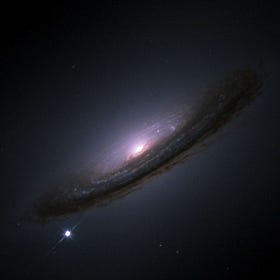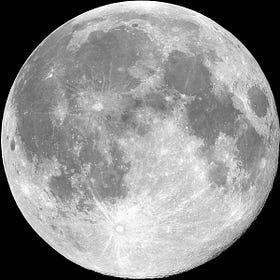Why are spheres so common in nature?
Spherical shapes of Soap Bubbles, Stars, Pulsars and Observable Universe explained
Nature is an infinite sphere of which the center is everywhere and the circumference nowhere.
- Blaise Pascal
Greetings, fellow Bohron
Sphere - the most recurrent shape encountered in nature - can be found everywhere, from the microworld of atoms, and subatomic particles like electrons to the macroworld of bubbles and water drops and even in the cosmic realm like planets, black holes, the entire observable universe. This is because the uniform, symmetrical nature of spheres is supported by the laws of physics.
How are perfectly spherical objects created in nature? Which natural forces are at play? Let’s find out.
Liquid Drops and Soap Bubbles
Surface tension is the tendency of liquid surfaces at rest to shrink into the minimum surface area possible. It arises due to the cohesive nature of its molecules.
Surface tension is what makes liquid drops spherical. It squeezes the liquid drop equally from all directions until it attains a volume enclosing the least possible surface area. It is a well-proven result that the shape that has the smallest surface area for an enclosed volume is a perfect sphere.

Mathematically inclined readers can find the derivation of this result here.
Surface tension has the units of energy per unit area. Since everything in the physical world possesses a natural tendency to attain minimum energy, a low surface area makes this possible.
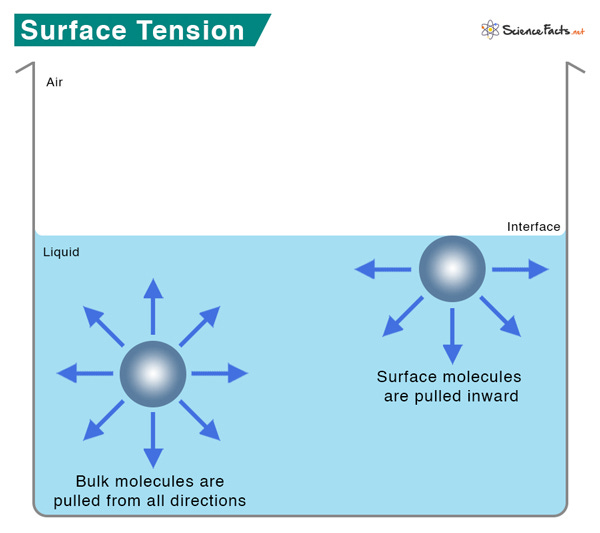
Stars
In the cosmic playground, enormous heavenly bodies are shaped into spheres by the action of gravitational force. Massive clouds of gas attract each other and slowly lead to the formation of stars, spherical in shape.
A star’s original shape can be distorted if it’s part of a binary system. In such a system, if the star is orbiting in close proximity to its companion of relatively much larger mass (for example, a black hole), the enormous gravity of the companion pulls the star’s material towards itself and hence distorts its original spherical shape.

Himalayas
Gravity doesn’t win every time. Sometimes it is overpowered by the chemical bonds of solids.
The surface gravity of Earth is resisted by chemical bonds in the crustal rocks. The weaker the surface gravity, the higher the mountains can reach. So there is a scientific reason why peaks higher than Mount Everest can’t exist on Earth. Mars, on the contrary, has a much weaker gravity. This is why Olympus Mons is much taller (14 mi) than Mt. Everest (5.5 mi).

Milky Way
We are all familiar with the shape of our home galaxy, the Milky Way: a giant almost flat disk circle. It might not have existed like this always. Some theories suggest that Milky Way was spherical, rotating, slowly compressing ball of gas at its birth. As it collapsed, its rotation rate kept increasing in accordance with the conservation of angular momentum. The centrifugal force so generated flattened the sphere pole-to-pole.
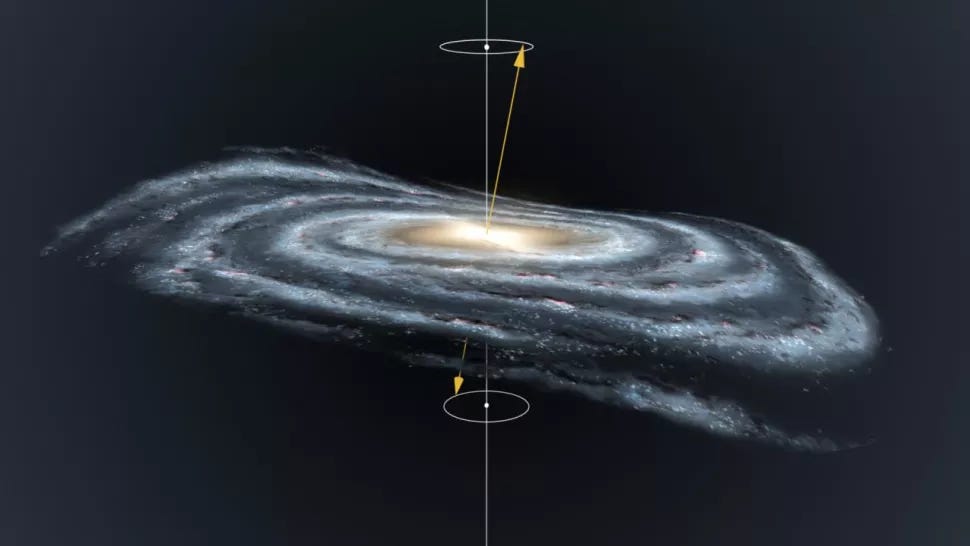
Pulsars
Pulsars are rapidly rotating neutron stars that emit beams of electromagnetic radiation from their magnetic poles.
These “cosmic ballet dancers” can rotate as fast as 43000 revolutions per minute. Their unusually high rotation rate generates centrifugal force which acts as artificial gravity. This rotation-generated gravity enhances the already enormous gravitational power of the neutron star and evens out the high places on its surface. Some astrophysicists believe that pulsars might be the most perfectly spherical objects in the universe.
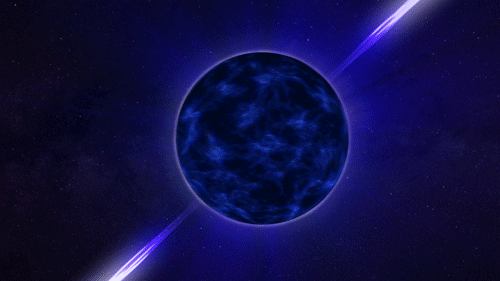
Observable Universe
The largest and most perfect sphere that we know of is the observable universe itself.
Observable universe is the region of space that humans can observe through all types of electromagnetic radiations with the aid of technology.
In 1929, Edwin Hubble discovered that the universe is expanding. From Doppler Effect, we know that the radiation coming from an object moving away from us loses its energy. In every direction, we encounter a distance beyond which the light coming from luminous objects loses all its energy before it can reach our telescopes. This distance is the same in all directions and forms the radius of the spherical observable universe. Hence, we are unable to see what’s beyond. This periphery forms the edge of the observable universe.
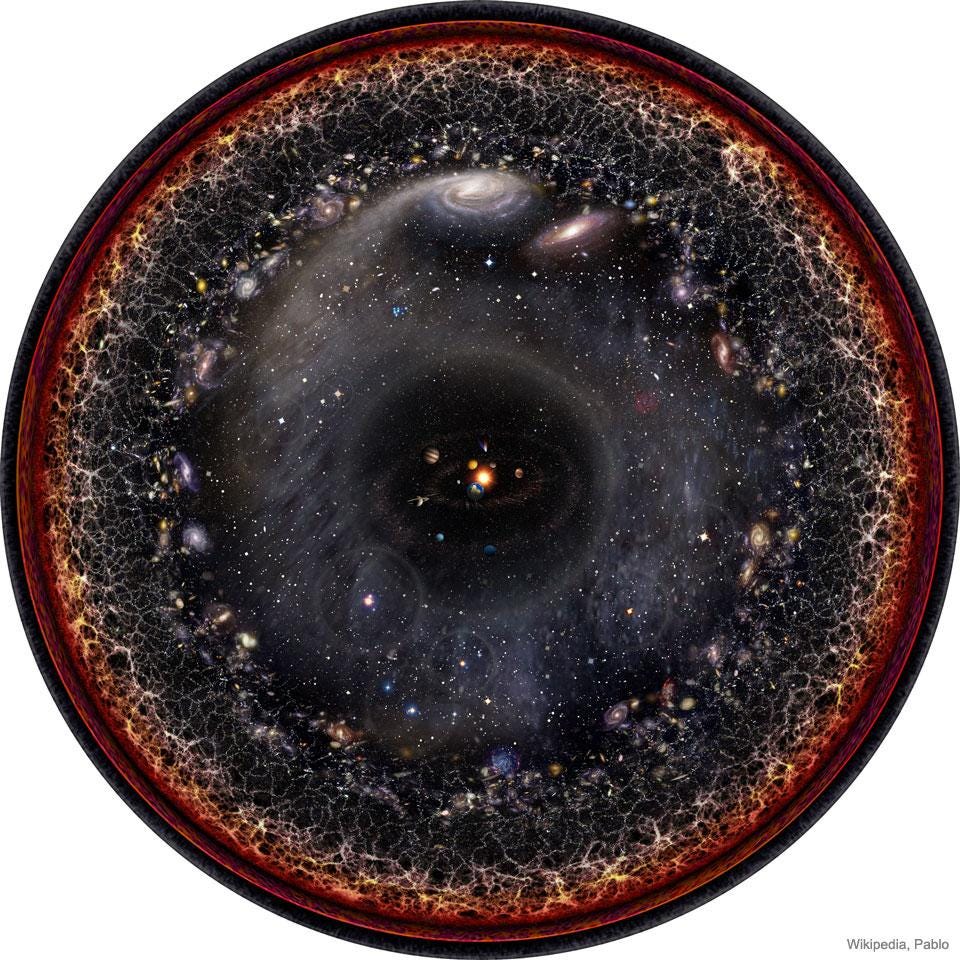
The impact of spheres is so profound in sciences that when we develop a thought experiment, we almost always approximate the object of our investigation to be spherical. The sphere being the simplest of all shapes, helps us to excavate the fundamental physics of the object. Once the basic physics is understood, we can move on to study more complex practical shapes.
Spheres play an indispensable role in our attempts to understand the workings of nature.
Sources:
Ch 8 - On Being Round, Astrophysics For People In A Hurry, Neil deGrasse Tyson
You May Also Read:
Why are you made of starstuff?
We are stardust brought to life, then empowered by the universe to figure itself out and we have only just begun. - Neil deGrasse Tyson Greetings, fellow scientist Ever wondered while sky-gazing what lies beyond it? Well, the first thing that we see are those numerous bright points in the sky, dazzling stars made up mostly from normal matter i.e. hydrogen…
How our Earth got its Moon?
Greetings, fellow scientist The Sun loves the Moon so much that he dies every night to let her breathe. And in return she reflects his love. - Jeffrey Fry Moon is Earth's only natural satellite. It is the largest celestial object which we observe in the night sky. M…





